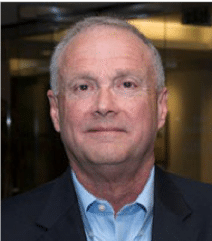By Kevin Kidwell vice president national tax exempt sales, OneAmerica®
It’s well documented that Americans aren’t saving enough to fund their retirement. So the drumbeat in the industry has been to remind participants in employer-sponsored retirement plans of the importance to “defer, defer, defer” and set aside a portion of their take-home pay.
Meanwhile, companies that administer 401(k) and 403(b) plans have endeavored to provide clients with relatable uncomplicated guidance, make enrolling and plan access simple, and provide resources to keep everything on track. For example, some plans are designed for automatic investment in a target date fund so that some employee participants don’t have to lift a finger.
Broadly speaking, this evolution to making things easy has been borne out by studies in behavioral finance that have shown that these plan designs work.
While we all agree that saving for retirement is a good thing, there’s a financial commitment from the employer that should be acknowledged and also applauded. The retirement plan industry is focused on helping the participant put aside enough money; but just as important, is a focus on assisting the employers in creating the best structure for the organization’s financial goals.
No employer wants to experience hardship when it’s trying to do right by its employees in funding retirement contributions. But some cookie-cutter approaches, which may seem easy in design and implementation, may not take into account the diverse needs of differently paid staff or worse yet, create cash flow issues that endanger the organizational mission.
The value in saving for retirement
The National Institute on Retirement Security[1] (NIRS) warned recently that American workers fortunate enough to have a retirement account offered through their employer still face a deep retirement savings shortfall.
Ultimately, the inability of older Americans to be self-sufficient after a lifetime of work will have negative impacts on the U.S. economy, government budgets and families, according to NIRS.
How retirement plans work
Contributions made by an employer to an employee’s retirement plan ─ whether the plan provides for elective deferrals or not – is regulated by the Internal Revenue Service (IRS),[2] and it’s those complex IRS rules that outline the guardrails for a tax-exempt retirement plan. (If you work for a nonprofit, that’s a common savings approach at your organization.)
The IRS allows an employee to defer his or her pay and allows the employer to also then make a tax-deferred contribution. The plans have strict rules in order to maintain their tax-deferred status. (The Employee Retirement Income Security Act requires several tests each year to prove a plan does not discriminate in favor of employees with higher incomes.[3] These rules don’t apply to government plans.)
While it’s not given, over time these contributions accumulate through the act of continuous employee/employer contributions and compounding.
A match, where the employer contributes an identical amount to what the participant invests, is not mandatory, but is the most common type of contribution.
I would argue that there are also other ways for employers to make contributions for the benefit of the entire company.
Here’s what could make a difference and is worth consideration:
- Look at the usefulness of creating three separate retirement plan pools — one that matches automatically for everyone who opts into in the retirement plan, one that is reserved for specific groups of employees with high-demand jobs, and a third that’s targeted to profit-sharing based on performance.[4]
- Consider a formula that factors in the Social Security Replacement Ratio. Not many people realize Social Security’s payout structure provides benefits progressively, so that people who earned the lowest wages at a company upon retirement receive a higher replacement rate than did the higher earners. As a result of this Social Security policy, the law allows employers to make contributions to offset the Social Security deficit for middle and higher income workers – compensating them for what Social Security is not going to pay out when they are eligible to draw it, in other words.
- Consider unique retirement plans at companies or organizations with specialty occupations, such as the medical field, acknowledging that the retirement-saving needs of “late entrants” into the workforce (attorneys, physicians, accountants and other professionals of occupations that require years of schooling) are different than other members of staff. Adults who left their careers to raise their children missed out, so they could be eligible for unique retirement plan designs that helps them catch up.
Employers may also look at the possibility of contributing more to the retirement account during a great year for the organization’s bottom line, but also possibly contribute less in a down business year.
Ultimately, the retirement plan of any tax-exempt organization needs to mirror their mission. The plan should be of optimal plan design and be one where the employer isn’t painted into a corner by funding obligations.
We’ve found through our experience that there are all kind of things we can do that makes sense. But ultimately, if the system in place is not good for the employer, it won’t be good in the long term for their employees.

In Kevin Kidwell’s role as vice president of national tax-exempt sales, he works to provide ideas, knowledge, information – both technical and practical – in an effort to facilitate improved plan and participant outcomes. Since joining OneAmerica in 1988, Kevin has held various positions within the Retirement Services division. Beginning in 2000, his exclusive focus has been on healthcare and tax exempt organizations.
Indianapolis-based OneAmerica®, an organization that can trace its roots back to 1877, has been helping organizations with their tax-exempt retirement plans since 1964. We believe a retirement plan should do more than help someone retire – it can help organizations recruit, retain and reward employees.
OneAmerica® is the marketing name for the companies of OneAmerica. Products issued and underwritten by American United Life Insurance Company® (AUL), a OneAmerica company. Administrative and recordkeeping services provided by McCready and Keene, Inc. or OneAmerica Retirement Services LLC, companies of OneAmerica which are not broker/dealers or investment advisors.
The
views and opinions expressed in this material are solely those of the author
and do not necessarily reflect the views and opinions of any of the companies
of OneAmerica. Provided content is for overview and informational purposes only
and is not intended and should not be relied upon as individualized tax, legal,
fiduciary, or investment advice. Investing involves risk including potential
loss of principal.
[1] https://www.businesswire.com/news/home/20190206005338/en/National-Institute-Retirement-Security-Testifies-House-Ways
[2] https://www.irs.gov/government-entities/federal-state-local-governments/employer-pick-up-contributions-to-benefit-plans
[3] https://www.plansponsor.com/401k-nondiscrimination-tests-explained/
[4] https://www.irs.gov/retirement-plans/plan-participant-employee/retirement-topics-vesting


